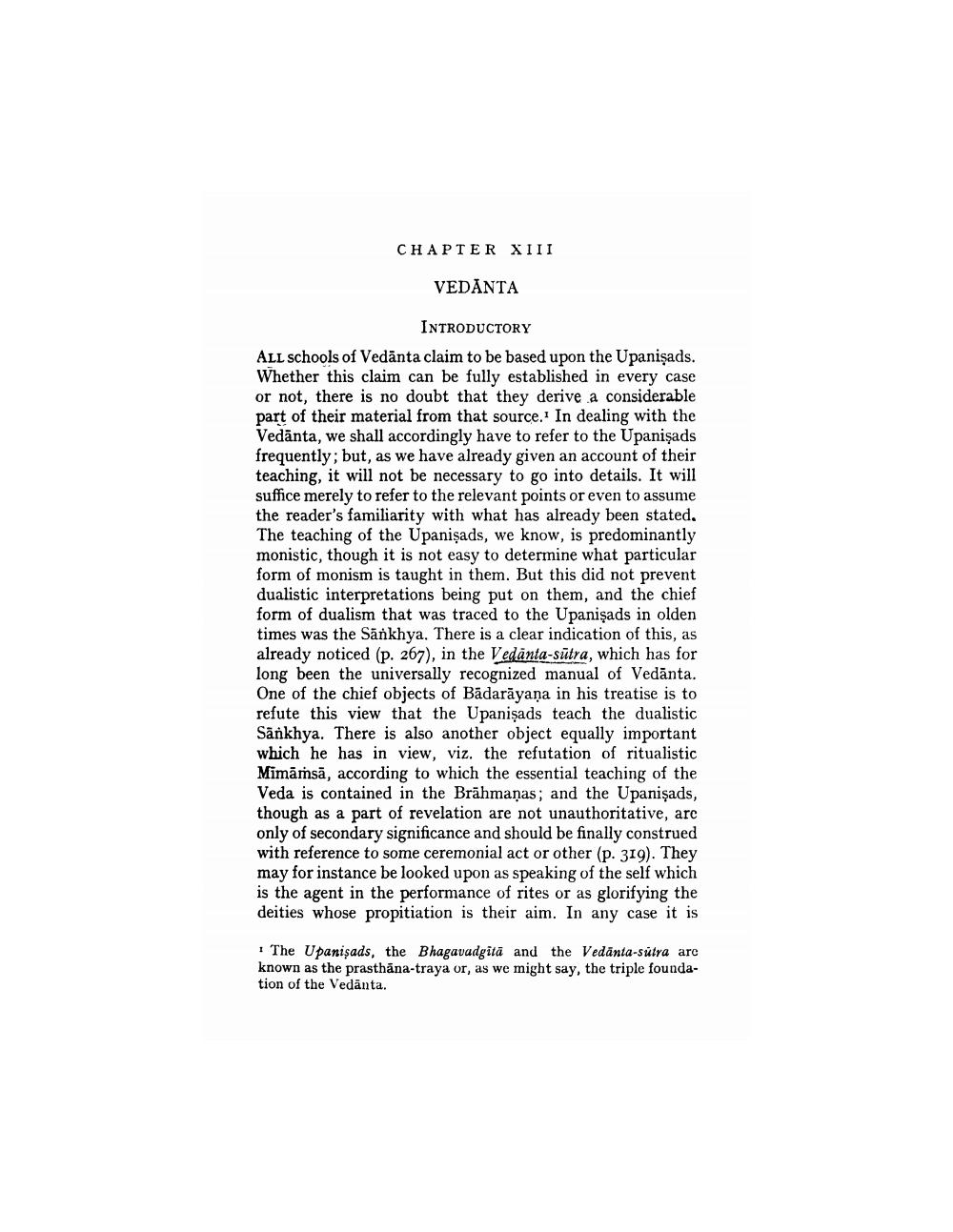________________
CHAPTER XIII
VEDANTA
INTRODUCTORY ALL schools of Vedānta claim to be based upon the Upanişads. Whether this claim can be fully established in every case or not, there is no doubt that they derive a considerable part of their material from that source. In dealing with the Vedānta, we shall accordingly have to refer to the Upanişads frequently; but, as we have already given an account of their teaching, it will not be necessary to go into details. It will suffice merely to refer to the relevant points or even to assume the reader's familiarity with what has already been stated. The teaching of the Upanişads, we know, is predominantly monistic, though it is not easy to determine what particular form of monism is taught in them. But this did not prevent dualistic interpretations being put on them, and the chief form of dualism that was traced to the Upanişads in olden times was the Sankhya, There is a clear indication of this, as already noticed (p. 267), in the Vedānta-sūtra, which has for long been the universally recognized manual of Vedānta. One of the chief objects of Badarāyana in his treatise is to refute this view that the Upanişads teach the dualistic Sankhya. There is also another object equally important which he has in view, viz. the refutation of ritualistic Mimāṁsā, according to which the essential teaching of the Veda is contained in the Brāhmanas; and the Upanişads, though as a part of revelation are not unauthoritative, arc only of secondary significance and should be finally construed with reference to some ceremonial act or other (p. 319). They may for instance be looked upon as speaking of the self which is the agent in the performance of rites or as glorifying the deities whose propitiation is their aim. In any case it is
The Upanişads, the Bhagavadgita and the Vedānta-sútra are known as the prasthana-traya or, as we might say, the triple foundation of the Vedānta.




